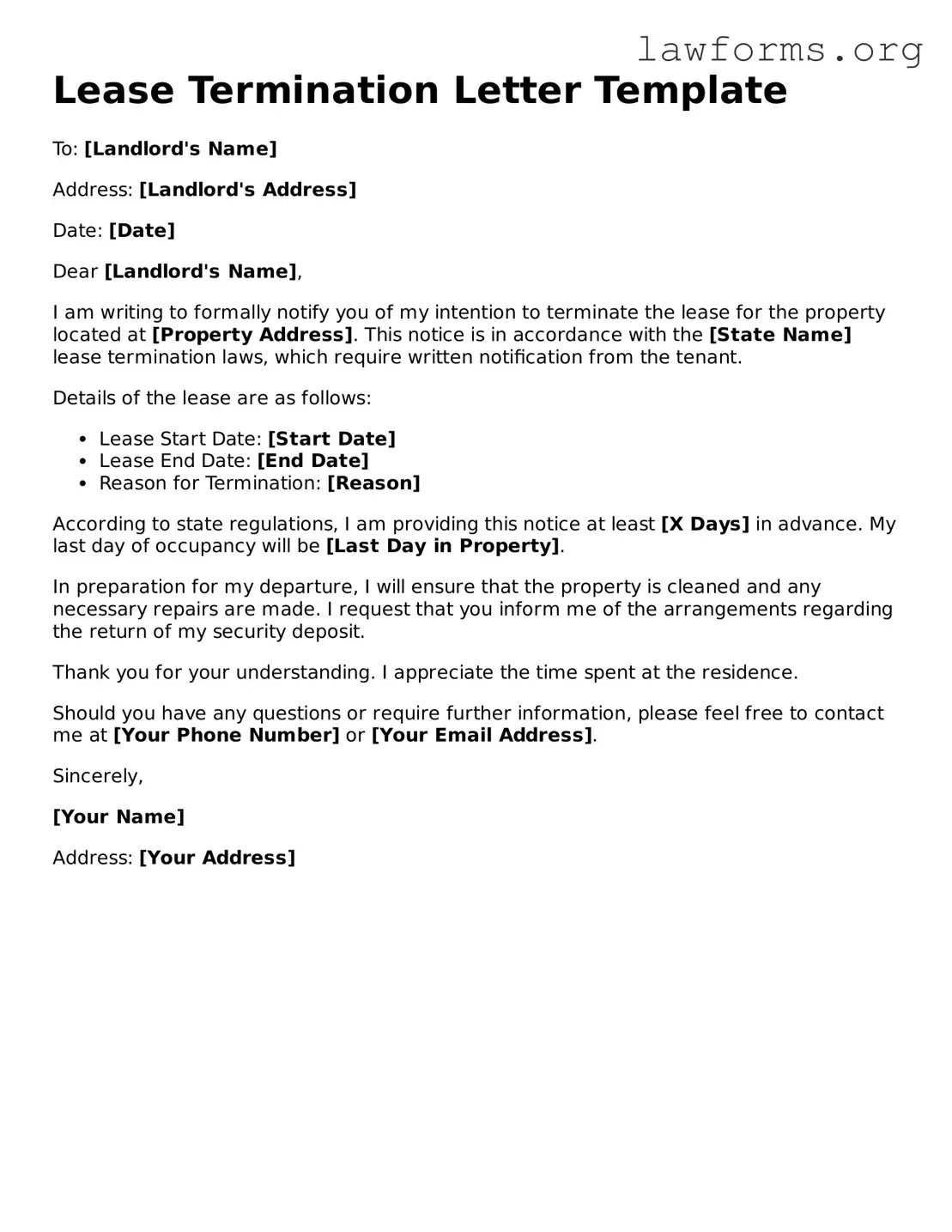Lease Termination Letter Template
To: [Landlord's Name]
Address: [Landlord's Address]
Date: [Date]
Dear [Landlord's Name],
I am writing to formally notify you of my intention to terminate the lease for the property located at [Property Address]. This notice is in accordance with the [State Name] lease termination laws, which require written notification from the tenant.
Details of the lease are as follows:
- Lease Start Date: [Start Date]
- Lease End Date: [End Date]
- Reason for Termination: [Reason]
According to state regulations, I am providing this notice at least [X Days] in advance. My last day of occupancy will be [Last Day in Property].
In preparation for my departure, I will ensure that the property is cleaned and any necessary repairs are made. I request that you inform me of the arrangements regarding the return of my security deposit.
Thank you for your understanding. I appreciate the time spent at the residence.
Should you have any questions or require further information, please feel free to contact me at [Your Phone Number] or [Your Email Address].
Sincerely,
[Your Name]
Address: [Your Address]
